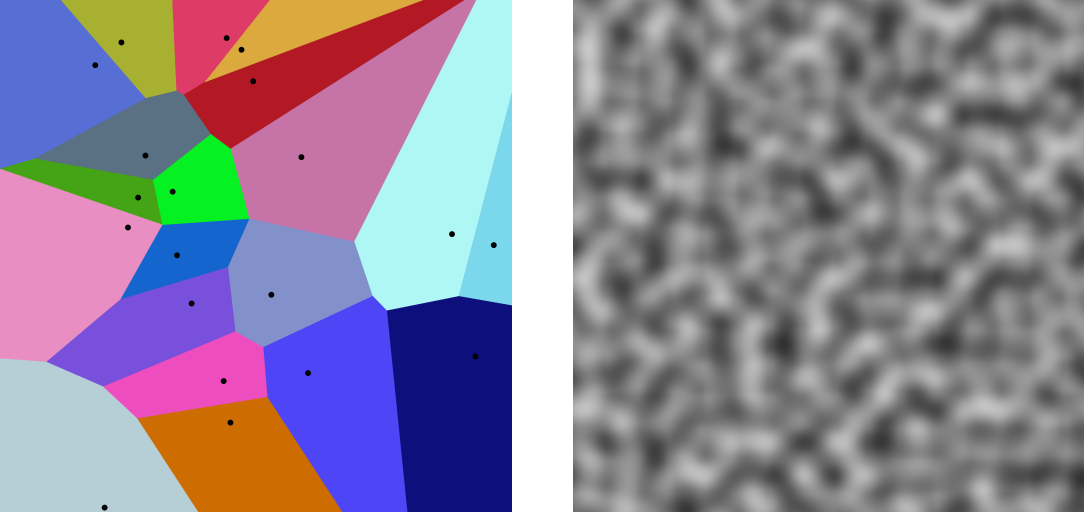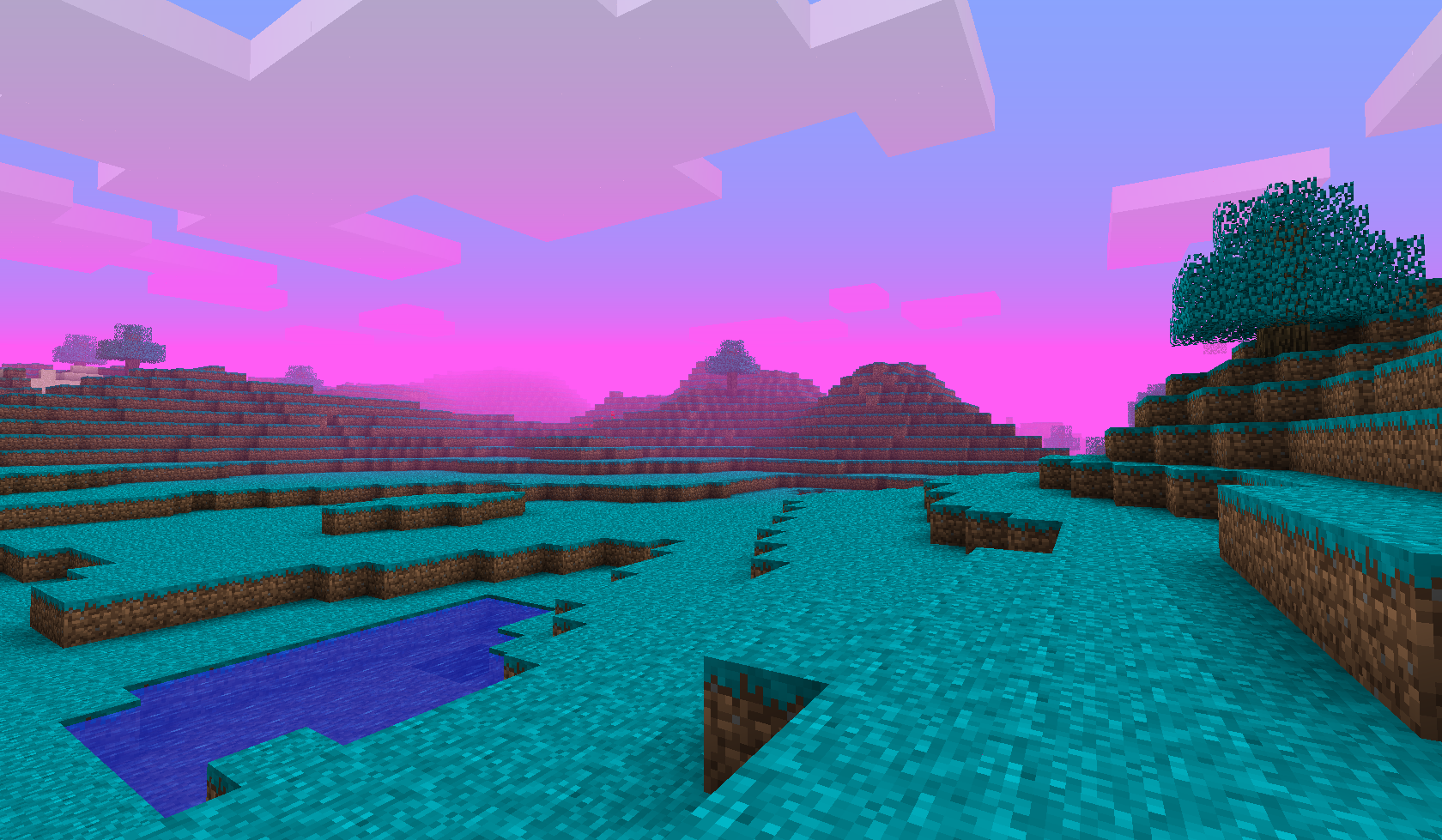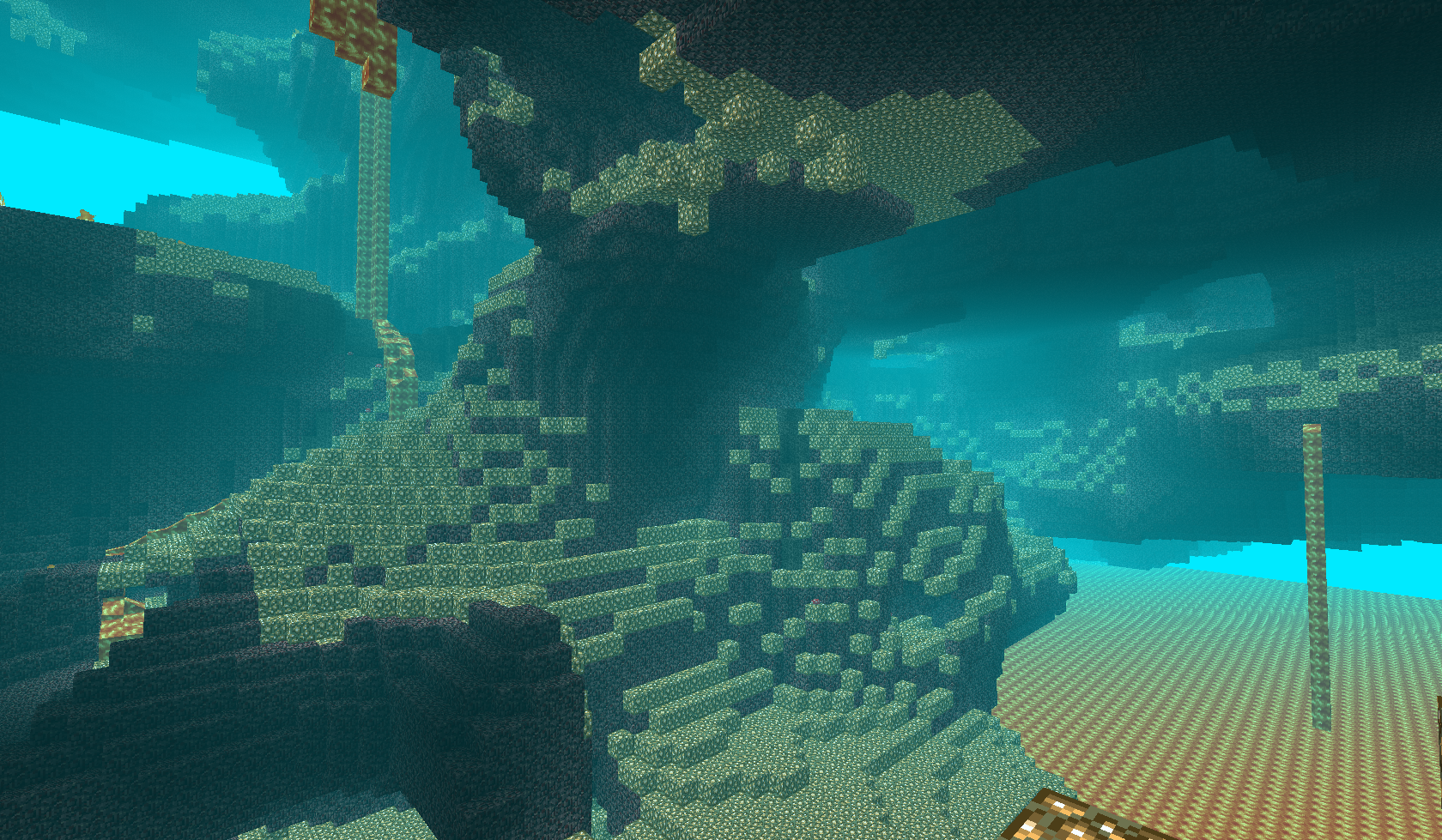A biome is a part of the world which has its own set of spawnable mobs, features, grass color, fog color, leaf color, precipitation etc.
Biomes are created using a BiomeBuilder during the BiomeRegisterEvent, this won’t make them appear by themselves, they then have to be added to a Biome Provider.
Creating the Biome
To create the Biome, make an event listener (described in Entrypoints & Events) for the BiomeRegisterEvent, something like this:
src/main/java/net/danygames2014/examplemod/event/BiomeListener.java
public class BiomeListener {
@EventListener
public void registerBiomes(BiomeRegisterEvent event){
}
}The biome creating process uses a Builder pattern so you will want to create a public static field for your biome to be able to reference it from anywhere in your mod and a local variable for our BiomeBuilder.
public class BiomeListener {
// Variables holding our biomes
public static Biome testBiome1;
public static Biome testBiome2;
@EventListener
public void registerBiomes(BiomeRegisterEvent event){
// A local biomebuilder instance that can be reused between biomes
BiomeBuilder biomeBuilder;
// Building Test Biome 1
biomeBuilder = BiomeBuilder.start("Test Biome 1");
testBiome1 = biomeBuilder.build();
// Building Test Biome 2
biomeBuilder = BiomeBuilder.start("Test Biome 2");
testBiome2 = biomeBuilder.build();
}
}You can see that the instance of the BiomeBuilder can be reused between the biomes since the actual biome is being passed to our holding variables in the
.build()method.
We have now made 2 completely standard biomes with no distinct features to them. To modify the features and other factors of the biome, you need to call methods on the biomeBuilder after starting it and before building the biome, let’s change the foliage color and fog color
// Building Test Biome 1
biomeBuilder = BiomeBuilder.start("Test Biome 1");
biomeBuilder.fogColor(0xFF5CF4);
biomeBuilder.leavesColor(0x00EAFF);
biomeBuilder.grassColor(0x00EAFF);
testBiome1 = biomeBuilder.build();
There are many more things you can call on the Biome Builder to customize your biomes
| Method | Effect |
|---|---|
| grassColor | The color of grass |
| leavesColor | The color of leaves |
| grassAndLeavesColor | The color of both grass and leaves |
| fogColor | The color of fog |
| noDimensionFeatures | Disables the default features (ores, flowers etc.) |
| feature | Adds a feature to the biome |
| overworldOres | Adds overworld ores to the biome |
| overworldLakes | Adds overworld lakes to the biome |
| height | Sets the minimum and maximum height of the biome |
| precipitation | Enables or disables downfall (snow/rain) |
| snow | Use snow instead of rain |
| passiveEntity | Adds a passive entity to the biome spawnlist |
| hostileEntity | Adds a hostile entity to the biome spawnlist |
| waterEntity | Adds a water entity to the biome spawnlist |
| surfaceRule | Adds a surface rule to the biome. This will disable the default surface |
Creating a Biome Provider
To have your biomes appear in game, you have to add them to a Biome Provider and register that provider to the dimension you want to add the biomes to.
There are 2 types of biomes providers:
Voronoi Provider (left) - creates a Voronoi diagram where to each of the cell a biome will be assigned.
Climate Provider (right) - generates a temperature and humidity Perlin Noise map, and you assign your biomes according to those values.

With Voronoi Provider, the temperature and humidity noise still exists, so it might be snowy in your biome
Let’s create a biome provider and add our Biomes to it. src/main/java/net/danygames2014/examplemod/event/BiomeListener.java
public class BiomeListener {
// Variables holding our biome providers
public static ClimateBiomeProvider climateBiomeProvider;
public static VoronoiBiomeProvider voronoiBiomeProvider;
@EventListener
public void registerBiomeProvider(BiomeProviderRegisterEvent event){
// Initialize the biome provider
climateBiomeProvider = new ClimateBiomeProvider();
// Add a biome in the temperature range of 0.7 - 1.0 and humidity of 0.4 - 1.0
climateBiomeProvider.addBiome(testBiome1, 1.0F, 0.7F, 1.0F, 0.4F);
// Add the biome provider to the overworld
BiomeAPI.addOverworldBiomeProvider(ExampleMod.NAMESPACE.id("climate_biome_provider"), climateBiomeProvider);
// Initialize the biome provider
voronoiBiomeProvider = new VoronoiBiomeProvider();
// Add a new biome to the provider
voronoiBiomeProvider.addBiome(testBiome2);
// Add the biome provider to the nether
BiomeAPI.addNetherBiomeProvider(ExampleMod.NAMESPACE.id("voronoi_biome_provider"), voronoiBiomeProvider);
}
}You can see that we have initialized the biome provider, added a biome to it and then called the BiomeAPI to add that provider to the respective dimension.
And these are our resulting biomes


The entire code for both Biomes and Biome Providers:
src/main/java/net/danygames2014/examplemod/event/BiomeListener.java
public class BiomeListener {
// Variables holding our biomes
public static Biome testBiome1;
public static Biome testBiome2;
// Variables holding our biome providers
public static ClimateBiomeProvider climateBiomeProvider;
public static VoronoiBiomeProvider voronoiBiomeProvider;
@EventListener
public void registerBiomes(BiomeRegisterEvent event){
// A local biomebuilder instance that can be reused between biomes
BiomeBuilder biomeBuilder;
// Building Test Biome 1
biomeBuilder = BiomeBuilder.start("Test Biome 1");
biomeBuilder.fogColor(0xFF5CF4);
biomeBuilder.leavesColor(0x00EAFF);
biomeBuilder.grassColor(0x00EAFF);
testBiome1 = biomeBuilder.build();
// Building Test Biome 2
biomeBuilder = BiomeBuilder.start("Test Biome 2");
biomeBuilder.fogColor(0x00EAFF);
biomeBuilder.leavesColor(0xFF5CF4);
biomeBuilder.grassColor(0xFF5CF4);
biomeBuilder.surfaceRule(SurfaceBuilder.start(Block.GLOWSTONE).ground(1).replace(Block.NETHERRACK).build());
testBiome2 = biomeBuilder.build();
}
@EventListener
public void registerBiomeProvider(BiomeProviderRegisterEvent event){
// Initialize the biome provider
climateBiomeProvider = new ClimateBiomeProvider();
// Add a biome in the temperature range of 0.7 - 1.0 and humidity of 0.4 - 1.0
climateBiomeProvider.addBiome(testBiome1, 1.0F, 0.7F, 1.0F, 0.4F);
// Add the biome provider to the overworld
BiomeAPI.addOverworldBiomeProvider(ExampleMod.NAMESPACE.id("climate_biome_provider"), climateBiomeProvider);
// Initialize the biome provider
voronoiBiomeProvider = new VoronoiBiomeProvider();
// Add a new biome to the provider
voronoiBiomeProvider.addBiome(testBiome2);
// Add the biome provider to the nether
BiomeAPI.addNetherBiomeProvider(ExampleMod.NAMESPACE.id("voronoi_biome_provider"), voronoiBiomeProvider);
}External Resources
StationAPI Test Mod Biome & Biome Provider
Spooky Squash Lands Biome & Biome Provider